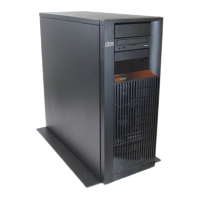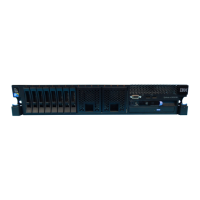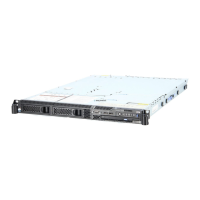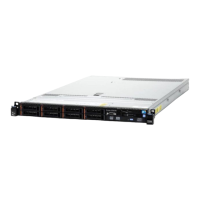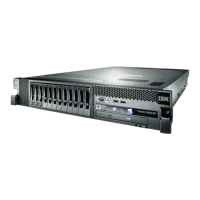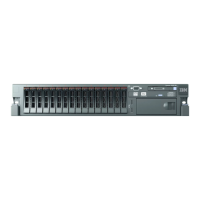v The modem is powered on.
v The modem cable is connected or plugged in.
v The modem switches are set or jumper wires are installed for the type of
communications network being used.
5. Is Normal mode on the control panel selected (see iSeries Service Functions)?
No Yes
↓ Go to step 7 of this procedure.
6. Select Normal mode on the control panel.
7. Verify that the cable connecting the modem to the communications adapter
card is fastened correctly.
8. Perform the following:
a. Dial the telephone number for the system.
b. Wait at least 40 seconds for the system to answer.
Note: The Ring Indicator signal is used to start the remote IPL. If the caller
hangs up the telephone before the system disconnects the line (indicated
by the return of the dial tone), the IPL will not complete. The caller may
hear other tones before the dial tone.
Was the telephone answered in 40 seconds?
Yes No
↓ Go to step 10 of this procedure.
9. Does the IPL complete successfully?
No Yes
↓ This ends the procedure.
10. The IPL from a remote location was not successful. The following steps show
you how to start a manual IPL and how to analyze the remote IPL problem.
Select Manual or Normal mode on the control panel.
Note: If you want the Use Dedicated Service Tools (DST) display shown after
the IPL, select Manual mode on the control panel.
11. Start an IPL by powering on the system (see “Powering On and Powering Off
the System and Logical Partitions” on page 922).
Does the IPL complete successfully?
Yes No
↓ Go to “Starting Point for All Problems” on page 4.
This ends the procedure.
12. Did you verify that the operating system has the correct value of 1 for the
remote power-on function in step 2 of this procedure?
No Yes
↓ Go to step 14 of this procedure.
13. Enter DSPSYSVAL QRMTIPL (the Display System Value command) on the
command line.
Does the operating system have the correct value of 1 for the remote
power-on function?
IPL Problems
28
iSeries Model 830, 840, SB2, and SB3 Problem Analysis, Repair and Parts V5R1
